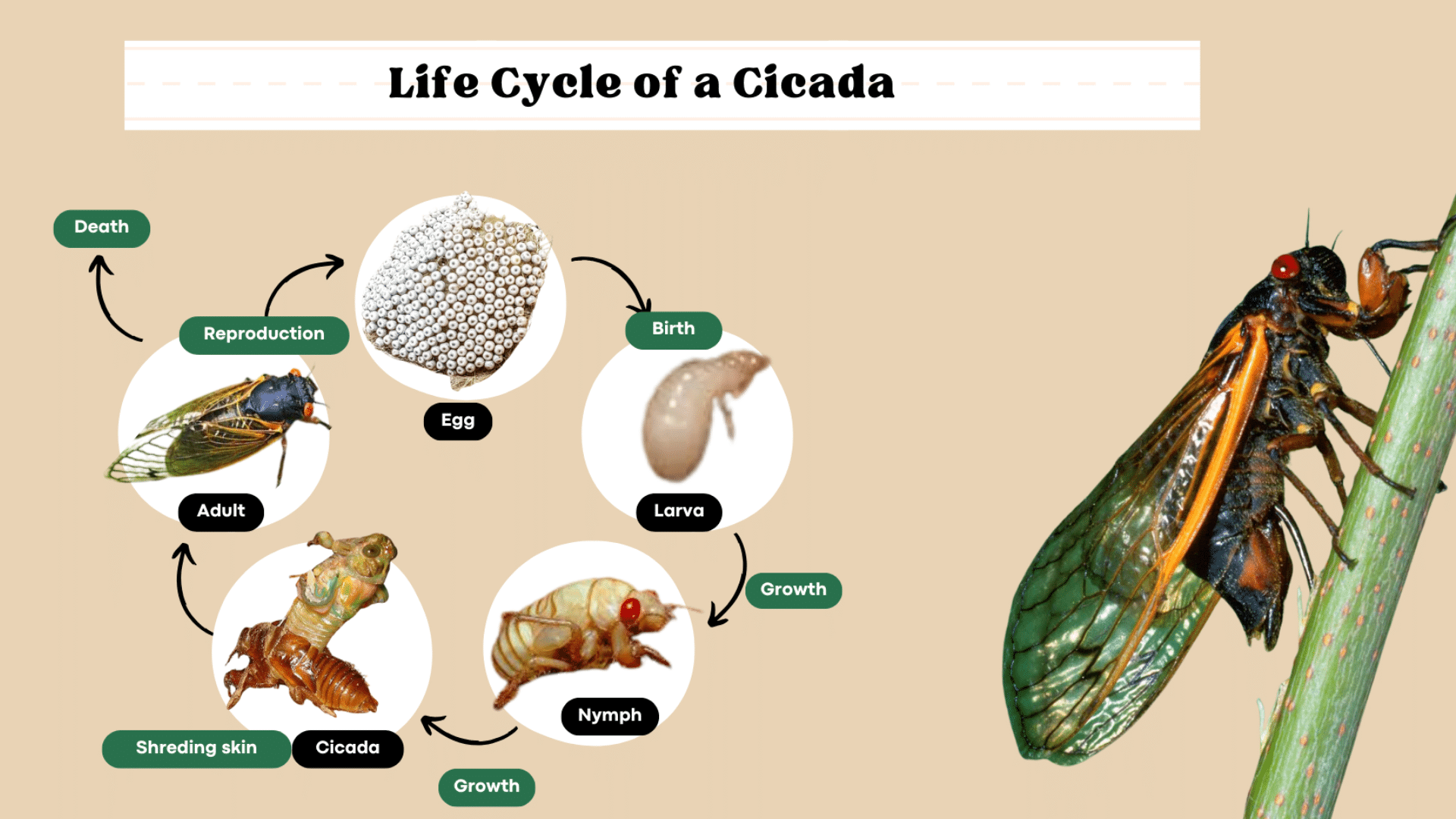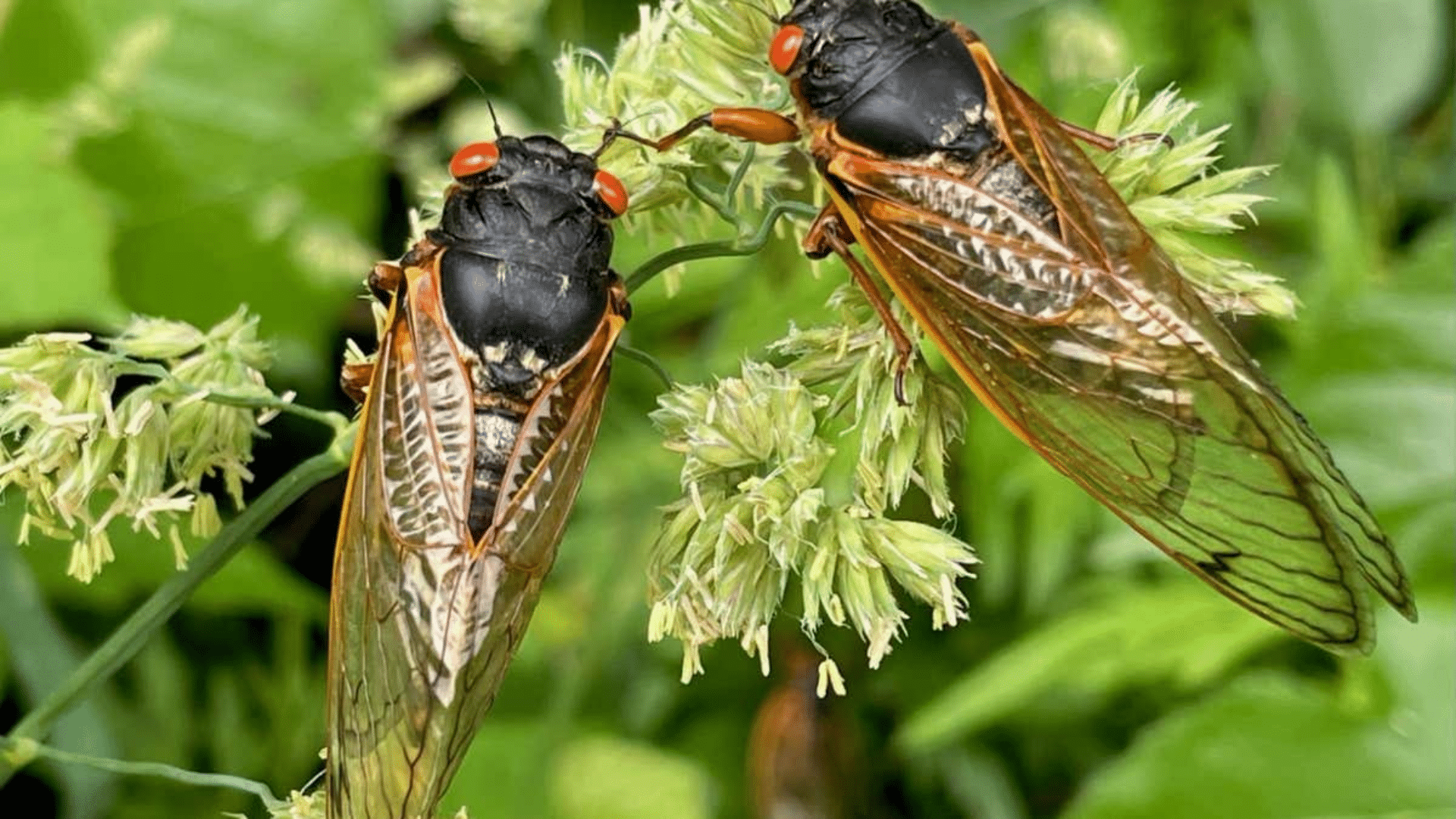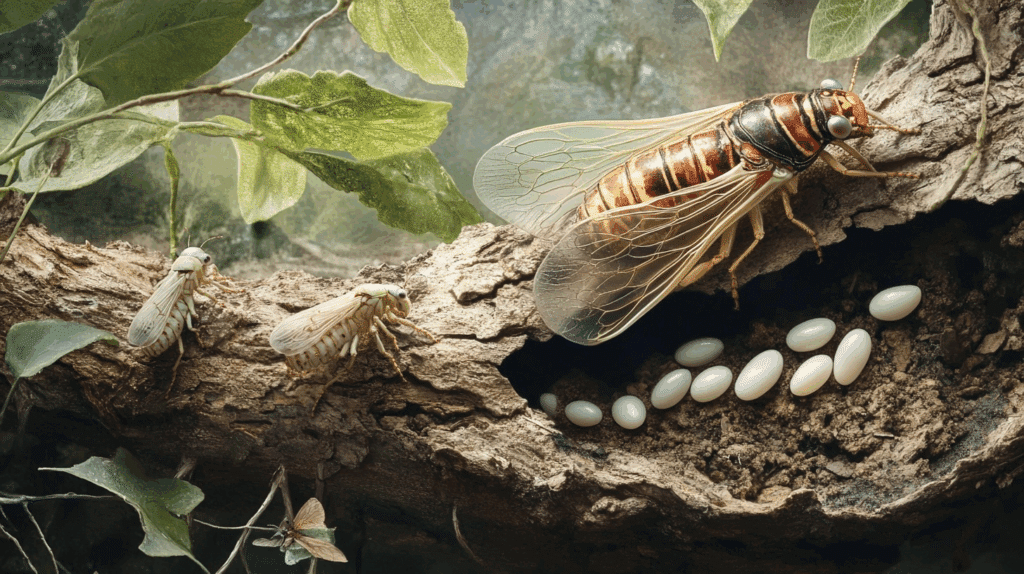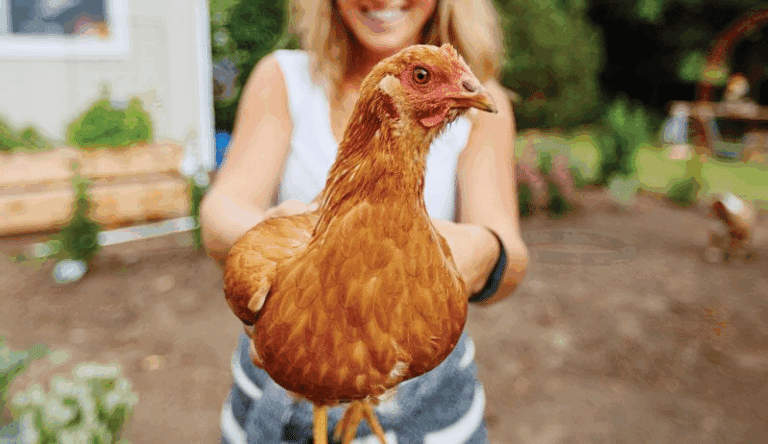Summer arrives, and kids hear loud buzzing sounds coming from trees. They look up but can’t always spot what’s making all that noise.
These mysterious insects called cicadas seem to appear out of nowhere, and their life story sounds too wild to be true.
This blog explains the life cycle of a cicada for kids in simple, fun terms that make perfect sense.
What is a Cicada?
A cicada is a large, noisy insect known for its loud buzzing sound, especially during summer. These bugs have big eyes, transparent wings, and strong bodies.
They spend most of their lives underground as nymphs and only come out as adults to mate, lay eggs, and complete their short lives above ground.
Cicadas help the environment by aerating the soil as they tunnel and by feeding birds, animals, and even other insects. When they die, their bodies return nutrients to the earth.
Cicadas are found all over the world, but they are especially common in warm climates like parts of the U.S., Australia, and Asia. They usually live in trees, shrubs, or underground.
The Life Cycle of a Cicada

Understanding the life cycle of a cicada for kids becomes much easier when broken down into simple steps.
These insects go through four main stages that take many years to complete. Each stage looks very different from the others. Let’s look at what happens during each part of their life:
Stage 1: The Egg
Female cicadas start the cycle by laying eggs. They use their sharp egg-laying tools to cut slits in tree branches. Each female can lay up to 600 eggs in these tiny cuts. The eggs are about the size of rice grains.
The eggs stay in the tree branches for six to ten weeks. During this time, baby cicadas grow inside the eggs. When they’re ready, tiny nymphs hatch out and fall to the ground.
Stage 2: The Nymph Life Underground
Once baby cicadas hit the ground, they burrow into the soil. This begins the longest part of their lives. These young insects, called nymphs, live underground for years. Some stay down there for 13 or 17 years!
During this time, nymphs grow bigger and stronger. They shed their skin several times as they outgrow it. They live near tree roots and drink plant juices to survive. The life cycle of a cicada shows how patient these creatures can be.
Stage 3: Coming Above Ground
When it’s time, nymphs dig tunnels to the surface. They usually come up at night when it’s cooler. Millions of them might appear at the same time. This happens in late spring or early summer.
The nymphs climb trees, fence posts, or buildings. Then comes the most exciting part: They split open their old skin and crawl out as adults. This process takes about an hour. The old skin stays stuck to whatever they climbed on.
Stage 4: Adult Life
New adult cicadas have soft, white bodies at first. Within a few hours, they turn dark and their wings become strong. Males start making their loud mating calls right away. These sounds can be heard from far away.
Adults live for only three to six weeks above ground. During this short time, they mate and lay eggs. Then the whole cycle starts over again.
Most adult cicadas don’t eat much. They focus on finding mates and creating the next generation.
Why are Cicadas Important?

Cicadas play key roles in nature that help keep our environment healthy and balanced for many different creatures.
- Food Source for Wildlife: Many animals depend on cicadas for food. Birds, fish, squirrels, and other creatures eat them when they emerge from the ground, helping these animals stay strong and healthy.
- Soil Health: Young cicadas create tunnels underground while they grow. These tunnels help air and water reach tree roots better. When cicadas die, their bodies break down and add nutrients to the soil.
- Natural Balance: The life cycle of a cicada for kids shows how nature keeps itself in balance. When lots of cicadas appear at once, it gives many animals extra food. This helps animal populations grow stronger.
- Scientific Study: Scientists study cicadas to learn about timing in nature. Their long cycles help researchers understand how climate and weather affect insects.
- Cultural Value: Many cultures see cicadas as symbols of rebirth and change because they spend so long underground before emerging.
Lesser-Known Facts About Cicada
These surprising facts about cicadas will make the life cycle of a cicada for kids even more interesting and fun to learn.
- Male cicadas can make sounds as loud as lawn mowers, reaching up to 120 decibels.
- Their eyes change from clear white to bright red within hours of coming above ground.
- Cicadas have lived on Earth for 200 million years, making them older than dinosaurs.
- They cannot bite, sting, or hurt humans because they only drink plant liquids.
- Different cicada groups, called broods, come out every 13 or 17 years on different schedules.
- People in many countries eat cicadas as a protein-rich snack that tastes nutty when cooked.
Wrapping Up
Now you know how interesting the life cycle of a cicada for kids really is! These insects spend years underground, then come out for just a few weeks to sing, mate, and start the cycle again.
They help feed wildlife and improve soil health, and have been doing this for millions of years.
Next time you hear cicadas buzzing in summer, you’ll understand what stage of the cicada’s life you are experiencing. You can share these facts with friends and family.
What cicada fact surprised you the most? Share your thoughts with others who love learning about nature.

















